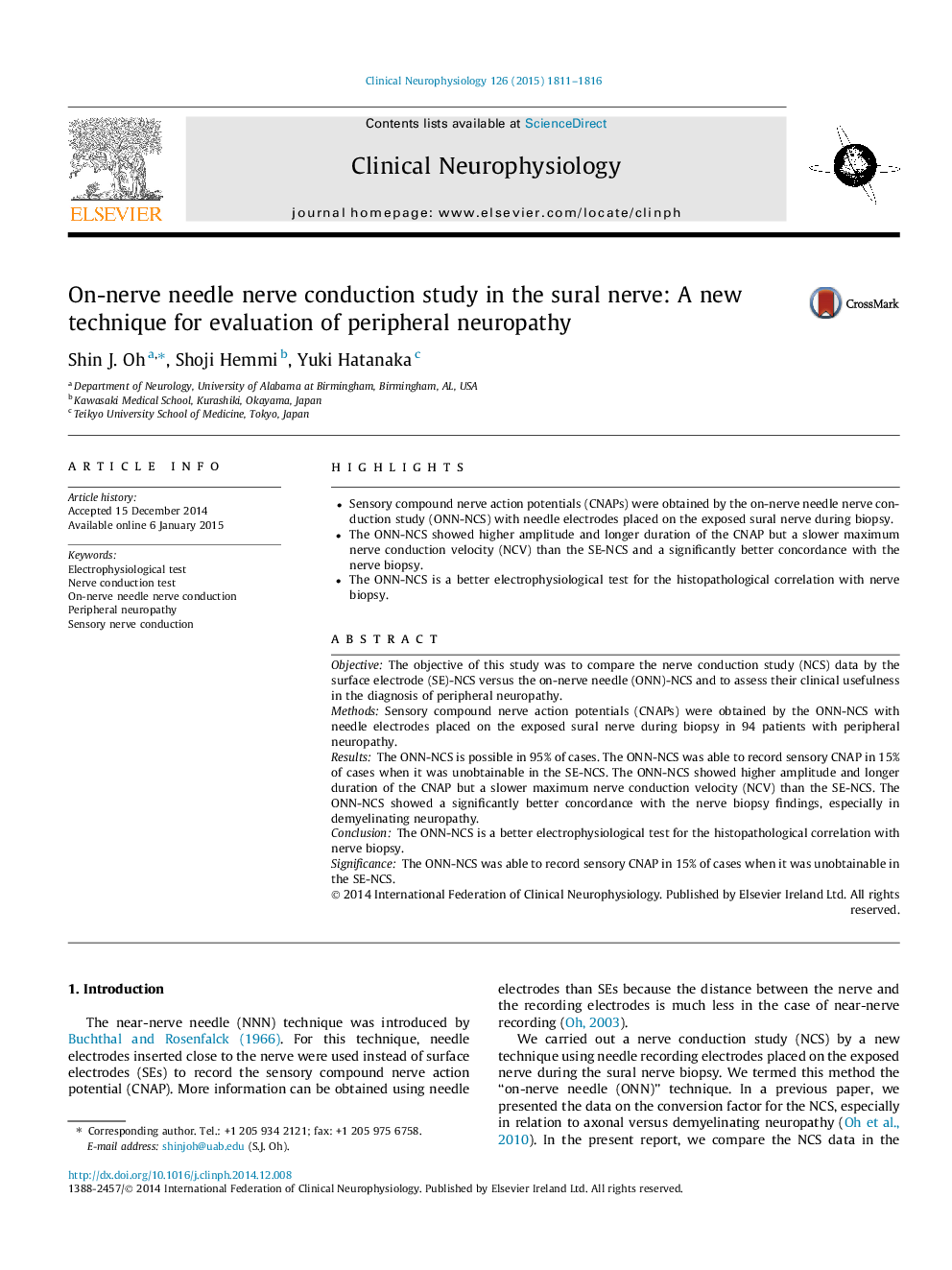| Article ID | Journal | Published Year | Pages | File Type |
|---|---|---|---|---|
| 3042832 | Clinical Neurophysiology | 2015 | 6 Pages |
•Sensory compound nerve action potentials (CNAPs) were obtained by the on-nerve needle nerve conduction study (ONN-NCS) with needle electrodes placed on the exposed sural nerve during biopsy.•The ONN-NCS showed higher amplitude and longer duration of the CNAP but a slower maximum nerve conduction velocity (NCV) than the SE-NCS and a significantly better concordance with the nerve biopsy.•The ONN-NCS is a better electrophysiological test for the histopathological correlation with nerve biopsy.
ObjectiveThe objective of this study was to compare the nerve conduction study (NCS) data by the surface electrode (SE)-NCS versus the on-nerve needle (ONN)-NCS and to assess their clinical usefulness in the diagnosis of peripheral neuropathy.MethodsSensory compound nerve action potentials (CNAPs) were obtained by the ONN-NCS with needle electrodes placed on the exposed sural nerve during biopsy in 94 patients with peripheral neuropathy.ResultsThe ONN-NCS is possible in 95% of cases. The ONN-NCS was able to record sensory CNAP in 15% of cases when it was unobtainable in the SE-NCS. The ONN-NCS showed higher amplitude and longer duration of the CNAP but a slower maximum nerve conduction velocity (NCV) than the SE-NCS. The ONN-NCS showed a significantly better concordance with the nerve biopsy findings, especially in demyelinating neuropathy.ConclusionThe ONN-NCS is a better electrophysiological test for the histopathological correlation with nerve biopsy.SignificanceThe ONN-NCS was able to record sensory CNAP in 15% of cases when it was unobtainable in the SE-NCS.
